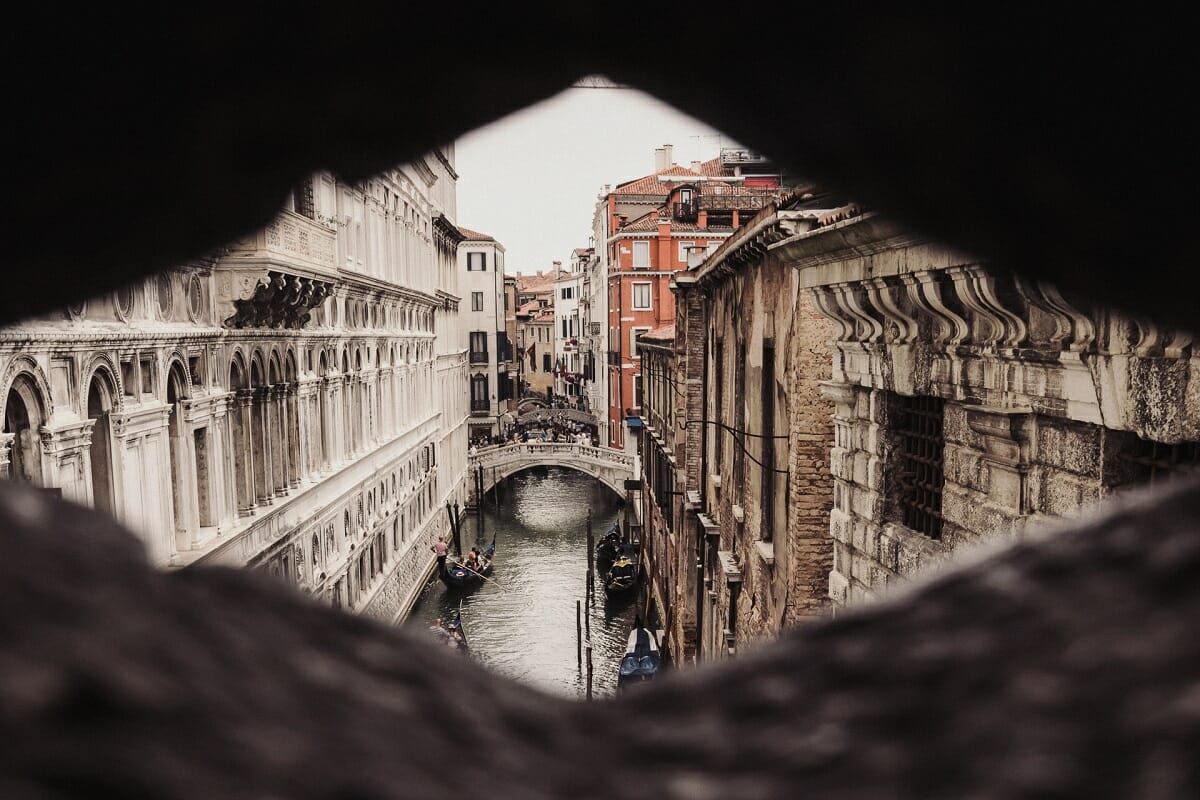
The Black Death in Venice: Doctor Masks to Plague Columns
September 12, 2023
You might be surprised to learn just how intertwined the history of Venice and the Black Death are. In fact, Venice was one of the cities most deeply destroyed by the series of bubonic plagues that made their way through Europe. The many islands on the outskirts of the city, the long-beaked masks, and even the word quarantine come from this time in history.

You can find the scars of Venice’s past all over the city – you just have to know where to look.
Venice suffered many attacks of plague throughout its history, and we can still see the imprints it left on the city. Overall, the history of Venice is closely tied to the history of the plague, and the city’s experiences with the disease shaped its society, culture, and public health practices for centuries to come. Let’s take a deeper look at how the Black Death affected Venice.
Table of Contents
ToggleVenice’s plague history
Venice was affected by various outbreaks of both the bubonic and pneumonic plague several times throughout its history. The most famous and deadly outbreak was the Black Death, which struck the city in 1348.
The Black Death of 1348 was a devastating outbreak of the bubonic plague that hit all of Europe. In Venice, it is estimated that as much as 50% of the city’s population may have died.
Of course, the exact number of deaths is difficult to determine, as we don’t have reliable demographic records from that time. However, contemporary research suggests that the city’s population may have been as high as 100,000 before the outbreak, and that tens of thousands died due to the plague.
Venice later experienced several more plague outbreaks, most notably in 1575-1577 and 1630-1631. The plague also returned to Venice in the 17th and 18th centuries, though these outbreaks were less severe than those that had occurred earlier.
All of these outbreaks resulted in significant loss of life and economic disruption. The plague contributed to the decline of Venice’s power and influence, and remains a significant part of the city’s history to this day.
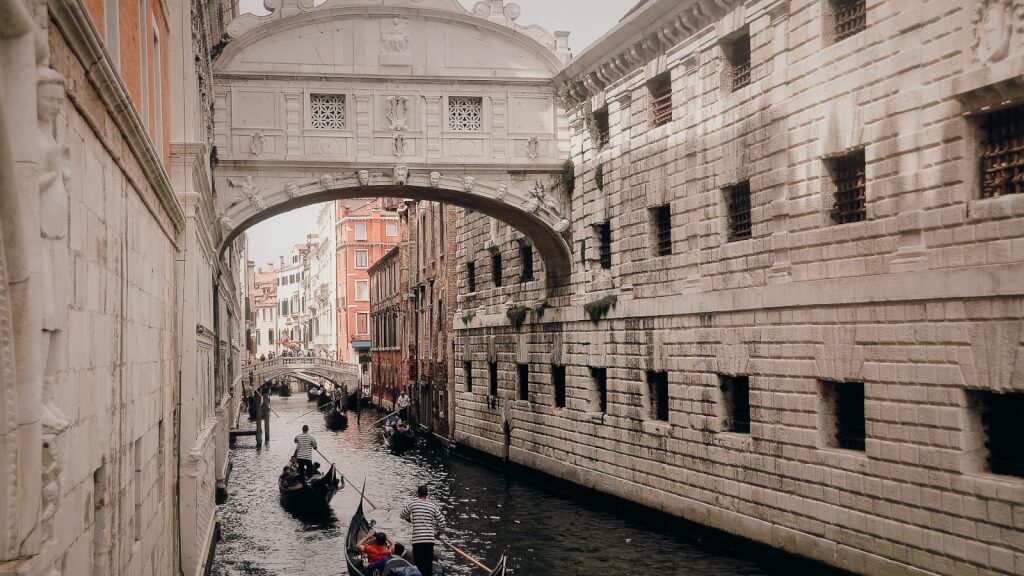
Now that you know about the history of the Black Death in Venice, keep your eyes peeled for symbols of the outbreak!
Why was Venice so affected by the Black Death?
Venice was a major commercial hub and trading center in Europe – it was essentially where trade with the East met Europe. The extensive trade networks made the city vulnerable to the spread of diseases.
Every day boats would come up the Adriatic from all over the world, and anywhere there is a major exchange of people, there is an exchange of germs. At the same time, this period of history was not the most hygienic anywhere in Europe, which also was a factor. This caused Venice to be one of the European cities hit worst by the Black Death.
Venice’s response to the crisis
In response to the outbreak, Venetian authorities implemented strict quarantine measures, which involved isolating infected individuals and their families in designated areas. In fact, during later outbreaks, they even identified islands known as Lazzaretto, where they would send individuals for quarantine.
They also imposed strict health regulations, such as mandatory bathing and burning of contaminated clothing, to try to prevent the spread of the disease. Despite these measures, the Black Death continued to take many citizens of Venice.
During this time the Venetian Republic also began implementing social reforms, such as wage controls and price regulations, to help the city’s poorest residents, who were the most affected by the outbreaks. The government also took steps to improve public health by building public bathhouses and new hospitals – some of which are still in use today!
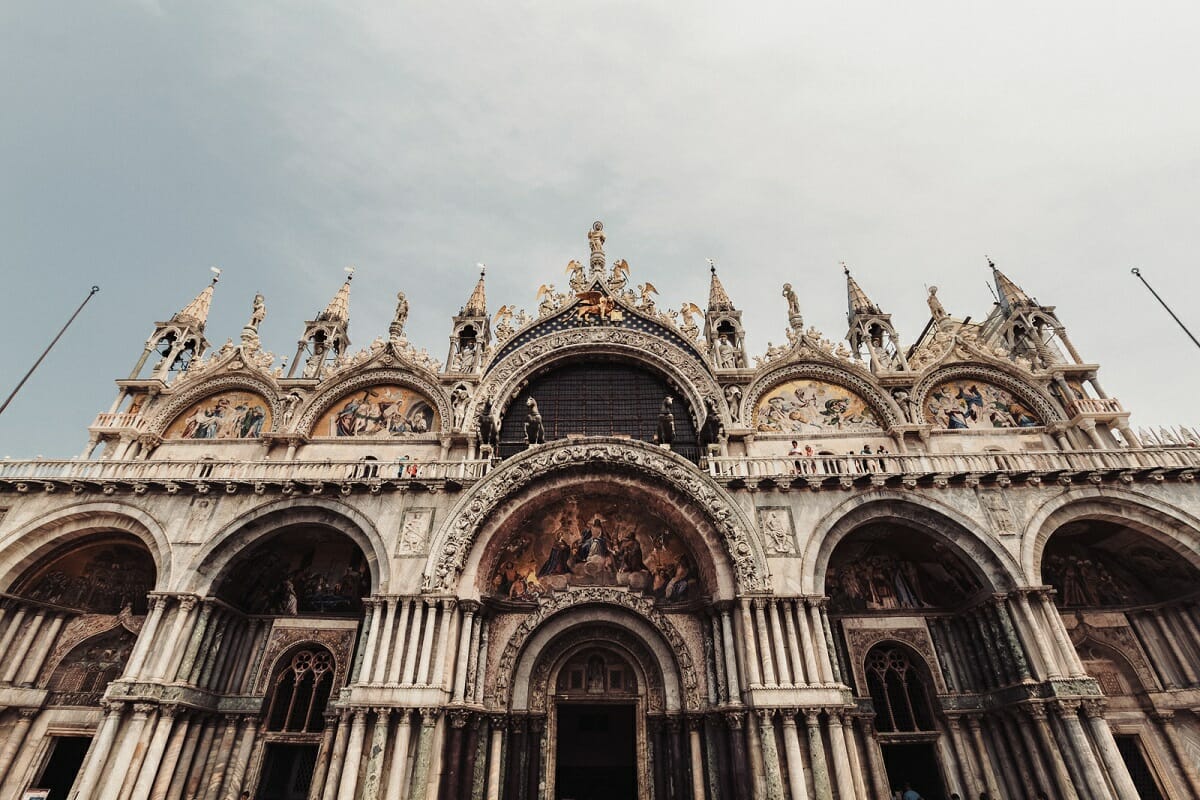
Piazza San Marco is just one of the Venetian squares where you can find plague columns.
Symbols of the Black Death in Venice
Venice’s plague history is still visible in many ways throughout the city. Here are just a few symbols of this dark history that you can see today:
Quarantine islands
During the Black Death, Venice had strict quarantine measures, and people suspected of being infected were sent to designated islands in the Venetian lagoon. Two of these islands – Lazzaretto Vecchio and Lazzaretto Nuovo, still exist and are open to visitors.
Plague columns
Following the Black Death, many cities in Europe, including Venice, erected columns as a symbol to give thanks for the passing of the outbreak. You can see them in Piazza San Marco and in front of the church of Santa Maria della Salute.
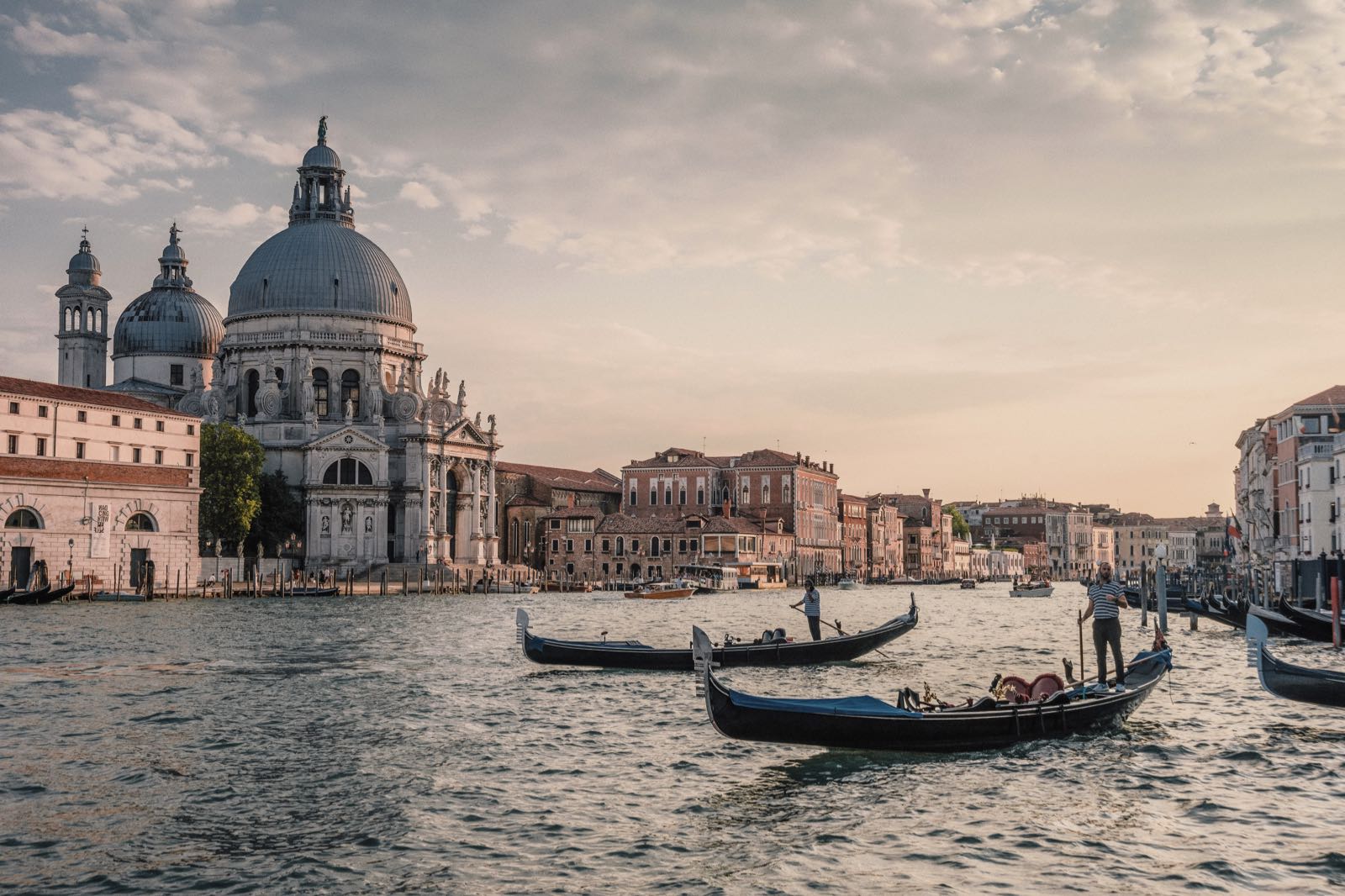
Plague columns can be found in front of Santa Maria della Salute, pictured here on the left.
Plague Doctor Masks
Venice’s plague masks are a distinctive part of the city’s history and culture. These masks were worn by physicians during outbreaks of plague, particularly in the later outbreaks of the 17th and 18th centuries.
Also known as the “doctor’s mask” or “beak mask,” this face covering featured a bird-like beak made of leather or metal, which covered the wearer’s nose and mouth. The “beak” was filled with aromatic herbs, like mint, cloves, and rose petals. These were believed to protect the wearer from the terrible smell of sickness and death that were thought to spread disease.
Plague masks also had glass eyepieces, which allowed the wearer to see while protecting themselves from infection. To further protect the doctors, in addition to these masks, they would wear long, flowing robes and gloves, to cover as much the skin as they could.
We still aren’t entirely sure how effective these masks were at protecting against the spread of disease, but they did become an important symbol of Venice’s response to the Black Death. Though they may have been a symbol of something more serious, today they are a popular costume during Carnevale festivities.
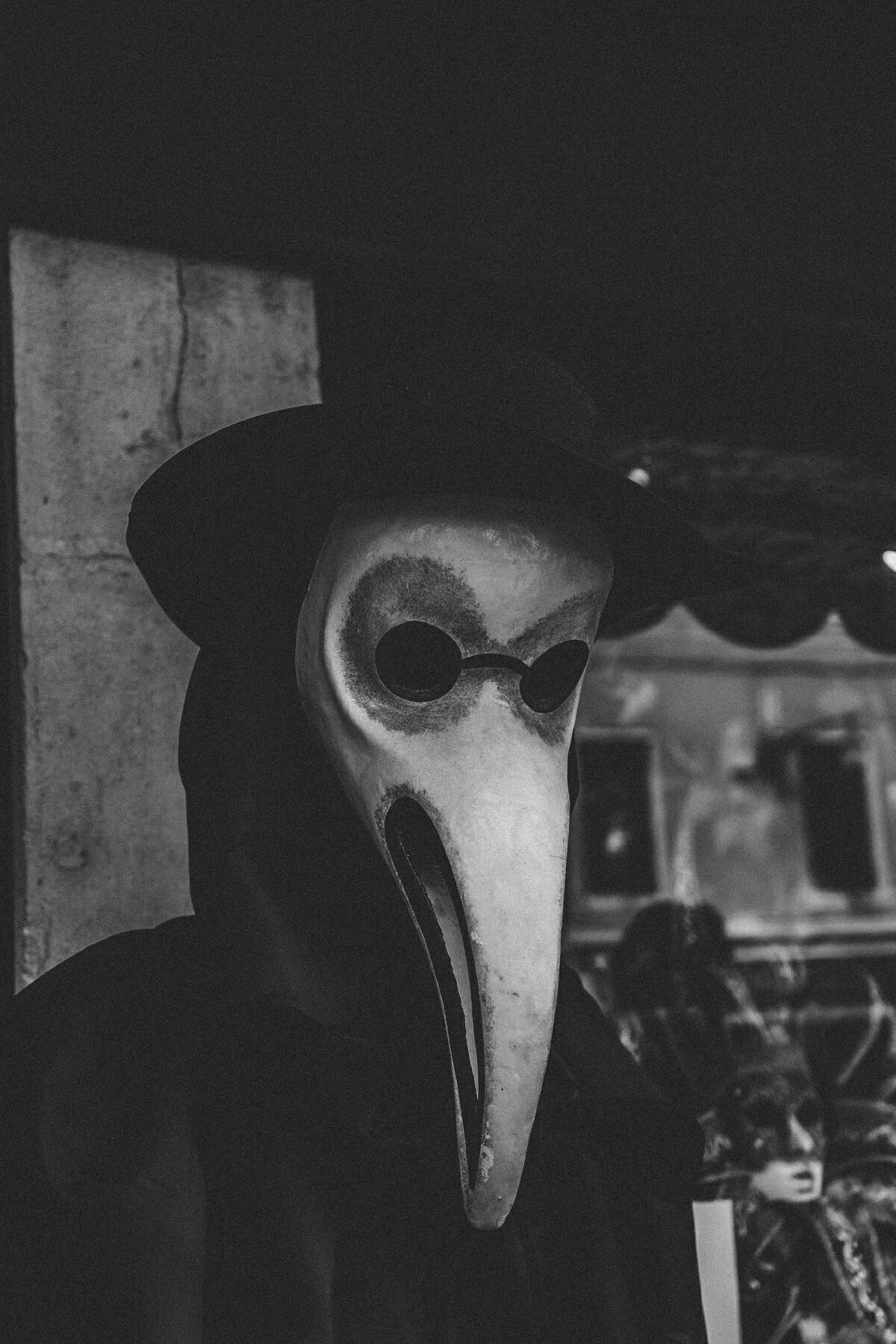
The Plague Doctor Masks date back to the Black Death in Venice. Photo credit: Conor Rabbett
Public health institutions
Venice’s experience with the plague led to the establishment of several public health buildings, including hospitals and quarantine stations. One of the most famous is the Ospedale Civile, which was built in the 18th-century outbreak and still is in operation today. (Here you can also visit the city’s Museum of Anatomy and of Pharmacy.)
Art and literature
The Black Death also left its mark on Venetian art and literature. It is a frequent theme in Venetian literature, including works by Giovanni Boccaccio and Carlo Goldoni.
Overall, Venice’s plague history is an important part of the city’s cultural heritage, and it continues to be remembered in many ways.
Quarantine: Venice’s imprint on world epidemics
Another way the Black Death left its imprint on Venice and the world was the word we now have heard often in the last few years – “quarantine”. Quarantine originated in 14th-century Venice, during a period of repeated outbreaks of the bubonic plague. The word comes from the Italian word “quaranta giorni,” which means “40 days.”
At that time, the Venetian Republic implemented a policy of requiring all ships arriving in the city to anchor offshore for 40 days before allowing passengers and crew to come into the city. This period of isolation was intended to prevent the spread of plague from foreign ports and was known as “quarantena” in Italian.
This practice proved effective in controlling the spread of disease and was soon adopted around Europe. Over time, the period of isolation has changed for every situation, but the term “quarantine” remained.
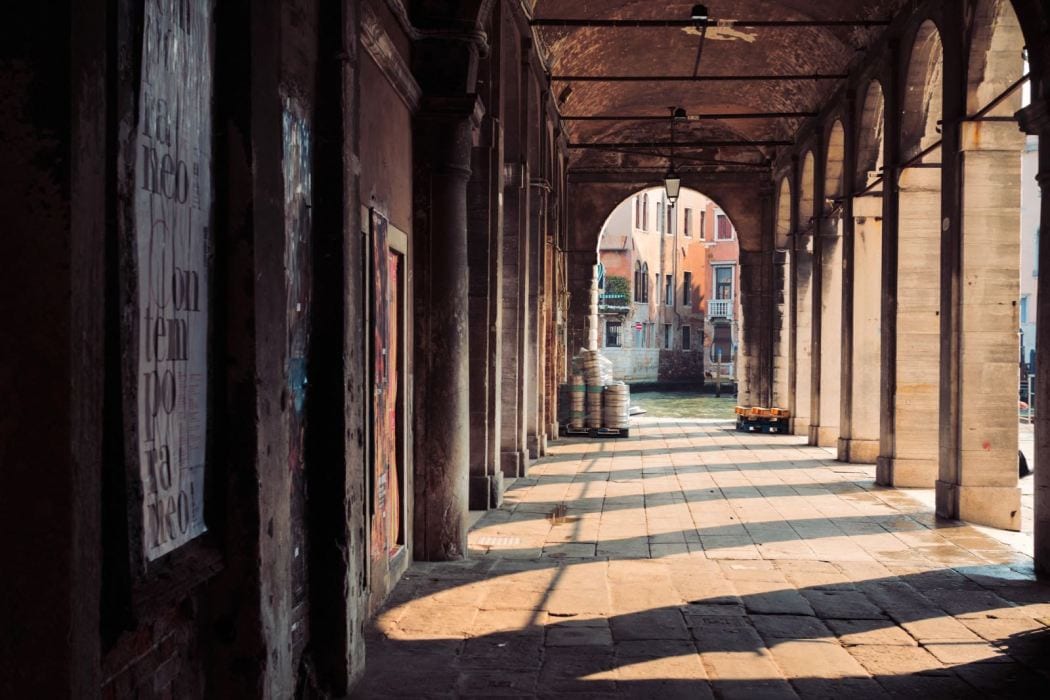
Curious to learn more secrets about the history of Venice? Join us on a tour of the Floating City, where an expert guide will help you navigate Venice’s untold sights and stories.
by Evelyn Hill
View more by Evelyn ›Book a Tour

Pristine Sistine - The Chapel at its Best
€89
1794 reviews

Premium Colosseum Tour with Roman Forum Palatine Hill
€56
850 reviews

Pasta-Making Class: Cook, Dine Drink Wine with a Local Chef
€64
121 reviews

Crypts, Bones Catacombs: Underground Tour of Rome
€69
401 reviews

VIP Doge's Palace Secret Passages Tour
€79
18 reviews

Legendary Venice: St. Mark's Basilica, Terrace Doge's Palace
€69
286 reviews









